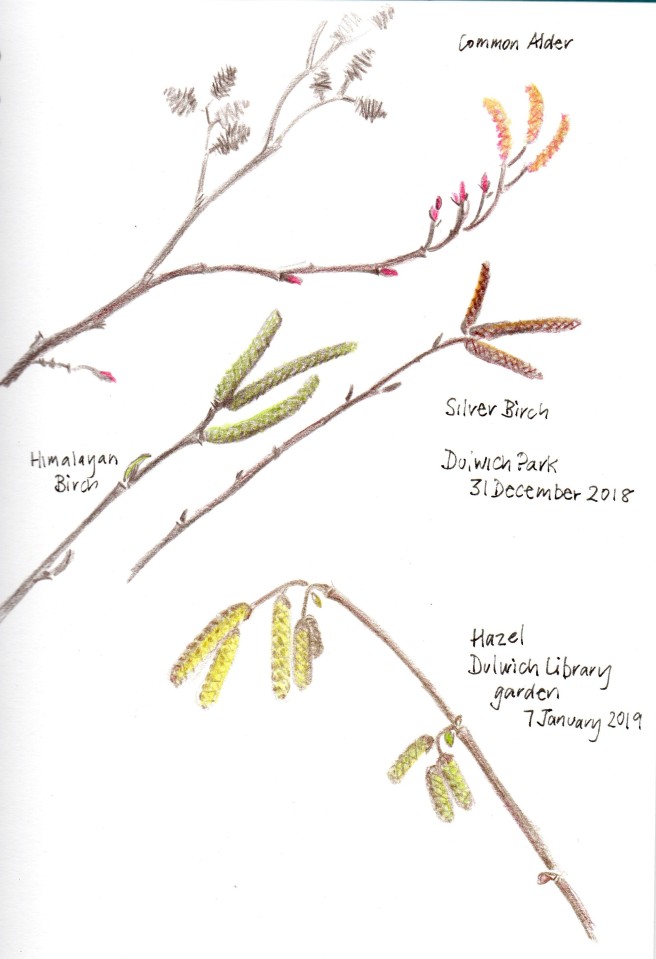This month’s challenge has been to paint some quick watercolour experiments at home. I wanted to paint in a freer, more expressive way, and also to use some of the kit I have already but rarely use. I combined the watercolour with watercolour pencils, crayons, salt (for texture), and used different brushes. I found it easier to do quick experiments at home rather than when I was in front of a location subject which seemed to need a more complex approach. I ended up painting mostly from flowers I had bought – an advantage was that I have continually had fresh flowers in the house. Next, I need to take some of this further in more developed pictures.
Category: Uncategorized
Park Life: Nature and the city
Last weekend I joined a workshop run by Pushing Your Sketching Boundaries, taught by Isabel Carmona and Celia Burgos. We worked out of doors in Hampstead and Highgate in north London. Our sketches were focussed on two main themes: contrasting the city and nature, using watercolour, and using colour to show tone and depth, using coloured pencils. Here are some pictures I created.
Day 1: Working on Parliament Hill, one of the highest parts of London, I did several studies which showed a panoramic view of the city through trees, and individual houses framed by trees.
This was quite a challenge, but I learned a lot. The second and third pictures above had colour washes added later at home – I think the apricot sky helps, and the added blue is overdone. The warm, apricot sky is not realistic; I added the colour I though the picture needed. I am not sure why it has taken me such a long time to realise I can do this. It helps, particularly when a subject is green and more green.

The painting above I think is better, and benefitted from the experience of doing the others.
Day 2: This looked at using colour, and coloured pencils, to represent tone (light/dark), texture, and depth, in particular the principal that warm colours (reds, oranges, reddish browns) appear to come forward in a painting, and cool colours (blues, bluish greens) to recede. Here are some quick experiments.
Here are two simple tonal drawings drawn with a single colour. For each one, I painted a simple watercolour afterwards, to remind myself of the principles.
Drawing trees
For some months, I have been part of a U3A (University of the Third Age) group learning to identify different types of tree. We visit parks in the Dulwich area and also look at street trees, which are surprisingly varied. Drawing from tree specimens at different times of year helps to improve observation and memory.
This week I have been looking at catkins, one of the most familiar signs of approaching spring. The Himalayan birch has a brighter white bark than the more familiar silver birch, and is frequently being planted as a street tree in this area.



























